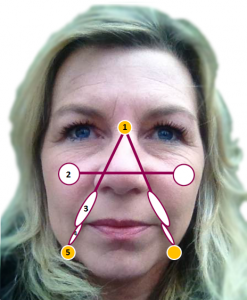In a competitive marketplace like aesthetics, it’s a good idea to pursue any extra training that will help shore up your credentials. And a great way to set yourself apart from other practitioners is by drilling down into more specialist treatments.
If you’re an ambitious aesthetic practitioner, it goes without saying that pursuing more advanced courses will enhance your reputation with potential patients.
Firstly, you’ll gain their trust as an expert who knows their stuff. And secondly, it’ll broaden your repertoire of treatments to offer them. They might come to you for one treatment, but stick around for others after getting great results.
Expert credentials + wide repertoire of treatments = healthy profits
Learning advanced techniques can be a real goldmine for your business, offering you vital new sources of revenue to help fuel your growth.
And because we know the value of advanced training – particularly for new practitioners seeking to get established – we’ve added some new specialist training courses to our programme.
Last month we launched our specialist Tear Trough training course, which has been well received by our delegates. And our newest addition is Non-Surgical Rhinoplasty training.
3 great reasons to train in Non-Surgical Rhinoplasty
1. It’s relatively easy to incorporate into your business
Non-Surgical Rhinoplasty makes a fairly easy add-on to your existing practice. If you’ve already trained in dermal fillers, particularly advanced dermal fillers, it’ll be relatively straightforward for you to adapt what you’ve learned and apply it in a new way.
You’ll already have a good grounding in the techniques, so it’ll be a case of learning about the specific anatomy of the nose, the facial angles and how treatment can affect them. (Click to see our full Non-Surgical Rhinoplasty training programme.)
2. It’s particularly profitable
Once you’ve trained, treatment could make a very profitable addition to your practice.
We’ve recently started offering the Non-Surgical Nose Job at our sister company Aurora Skin Clinics, charging £500 per treatment.
When you consider that treatment can take as little as 15 minutes, it makes for a very impressive profit-to-treatment-time ratio – better than standard dermal filler treatments.
3. There’s good potential for growth
While surgical rhinoplasty remains a popular choice, the total performed in the UK fell by 24% last year – the biggest drop of all major cosmetic procedures.
And as we reported on the blog a few weeks ago, ISAPS have revealed stats which show that non-surgical treatments are growing faster than surgery.
So there’s plenty of reason to think that demand for Non-Surgical Rhinoplasty will continue to grow, as patients who may have opted for surgery increasingly choose the non-surgical option instead.
Our Non-Surgical Rhinoplasty training is offered by leading specialist and UK Allergan ambassador Mr Ash Labib. For more information on the course, or to book your place, please get in touch with the team.


 With age, facial volume migrates gradually southwards. This changes the shape of the face from the inverted triangle of youth, with its apex facing down, to the traditional triangle of middle age and beyond, with its apex facing up.
With age, facial volume migrates gradually southwards. This changes the shape of the face from the inverted triangle of youth, with its apex facing down, to the traditional triangle of middle age and beyond, with its apex facing up.










